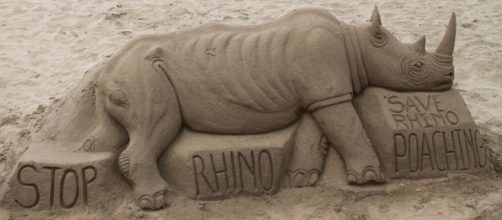While politics, economy and entertainment keep us busy every day, the world is suffering irreversible changes. Whether it be through poaching or global warming, various factors are causing an increase in the number of threats to a variety of animal species across the world. We take a look at a few of these species listed as "Critically Endangered", the highest risk category assigned by the IUCN Red List for wild species. The International Union for Conservation of Nature (IUCN) is an international organisation, established in 1948, working in the field of nature conservation and sustainable use of natural resources.
Amur Leopard
Amur leopard also known as the Far Eastern leopard, the Manchurian leopard or the Korean leopard is a leopard subspecies belonging to south-eastern Russia and northeast China. Very similar to other leopards, the Amur leopard is capable of running at speeds of up to 37 miles per hour with an incredible leap of more than 19 feet horizontally and up to 10 feet vertically. Amur leopards have a life span of 10-15 years in the wild and up to 20 years in captivity. Reports in 2007 indicated that under 30 individuals were left in the world, however conservation efforts have seen this population number go up to more than 60 in 2015.
Black Rhinoceros
One of the biggest victims of animal poaching has been the rhinoceros.
The species of black rhinoceros overall is classified as critically endangered, and further consists of three subspecies, one of which, the western black rhinoceros, was declared extinct by the International Union for Conservation of Nature in 2011. Black rhinos have two horns, with the front horn longer than the rear and occasionally a third small posterior horn. While their population size is estimated to be around 5,000 - 5,400, the homes of these incredible animals have seen a massive rise in illegal trade involving rhino horn. 96 percent of Africa's remaining black rhinos were killed in the years between 1970 and 1992. More recent reports from 2014 show that a total of 1,215 rhinos were poached in South Africa, a 21 percent increase from the previous year.
Sumatran Tiger
The Sumatran tiger is one of the smallest subspecies of tigers, found only on the Indonesian island of Sumatra. According to expert estimates from 1978, the population of Sumatran tigers ranged closer to 1,000. With increasing number of poaching cases every year, their population has been consistently declining and IUCN listed the Sumatran Tiger as Critically Endangered on the IUCN Red List in 2008, with an estimated population somewhere between 441 to 679 individuals, and no subpopulation larger than 50 individual. More recent estimates indicate that fewer than 400 Sumatran tigers exist today.
Mountain Gorilla
One of the more famed animals on the list, the mountain gorilla as the name suggests live in forests high in the mountains, at elevations of 8,000 to 13,000 feet.
These gorillas are characterised by a thicker fur compared to other great apes. The thickness of the fur helps them survive in a habitat where temperatures often drop below freezing. But with a consistent movement of human beings in their territory, these animals have been pushed farther and farther up into the mountains. This shift up the mountain has caused the gorillas to live in dangerous and sometimes deadly conditions . Their population has grown from 620 in 1989 to around 880 today but the increasing trend of habitat loss might prove very deadly.
What can you do?
Despite tireless efforts of organisations like the WWF, the African Wildlife Foundation and many others, these animals still continue to suffer from issues such as poaching and habitat loss.
The only way forward is for us to stand together and declare that harming wildlife is inherently wrong and needs to stop. While having awareness is the first step, you can contribute further by looking at the work of international organisations around you, such as the WWF, and help them through petitions and donations. These animals do not have the leisure to wait for a change in political or economic scenario, research how you can contribute directly and share awareness. Always remember that we only share this planet, we do not own it.


